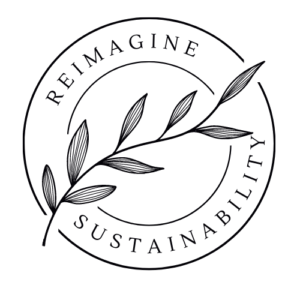Do you know what really excites me? When I can put knowledge into practice. It’s a rewarding feeling to know that I not only understand, but can implement what I learned. This post is all about putting the concept of systems and applying systems thinking knowledge you’ve gained from my two previous articles into practice. No worries, if you haven’t come across those two articles, I’ll give you the links here:
5 Helpful Steps To Understand The Concept Of Systems Better
And
Why Is Systems Thinking So Useful To Achieve Sustainability
It’s very exciting because it’s the first time that I’ve created a trilogy: the first article is about defining the concept of systems, the second one is about developing a systems thinking mindset and this post will rule them all! Sort of… this article will inspire you to apply the knowledge you gained.
Now it’s time to shine and apply your knowledge. Turn your knowledge into action! That’s how I want to support you today! Step by step towards Sustainability.

Linear or systems thinking, it makes a difference
Action is good, a recap is better for complex subjects
Let’s start with a short recap of defining a system and why it’s necessary to develop systems thinking.
Systems define a set of parts that work together within a mechanism or as an interconnected network. If we don’t understand the system basics, we will have a hard time finding the right solutions to our most pressing problems. Even worse, with a poor understanding of the system, our decisions can cause more harm than good.
Consequently, in the Sustainability space it’s meaningful to look at the whole system where a challenge or problem occurs. In fact, to achieve the best possible result we have to address the problem at its root and not just treat the symptoms.
Here, systems thinking plays a crucial role. Systems thinking allows us to see a whole interconnected web of relationships within a system.
A quick summary of the 11 principles of systems thinking and then we can get started
Systems are complicated, but with the right, supportive knowledge, we can bring more clarity into the jumble. A helpful way is to have the 11 principles of systems thinking in mind when working in complex systems:
- See systems as a cause
- Everything is interconnected
- The world is circular
- Feedback drives complexity
- Uncertainty of cause-effect relationships
- Unintended consequences
- Leverage points
- Your mental model matters
- Don’t underestimate soft skills
- Visualise the system
- Make use of diversity
Now that we have sorted out our knowledge fundamentals, we can start with the fun part: applying the systems concept in combination with systems thinking.
Specifically, I chose a system that most of us are familiar with to be an example. I hope you enjoy picking apart this system: a cafe.
Let the fun begin…
Defining the different elements in the cafe system
First things first, what is a cafe? According to the dictionary, a cafe is a small restaurant selling light meals and drinks. Easy peasy. The next step is to identify the overall goal of a cafe. For our experiment and to make it easier we can agree that the goal is to sell coffee. Sustainability doesn’t always have to be complicated.
So, we’ve identified what a cafe is and its goal. We have a sound foundation to continue our work by identifying the different parts of a cafe. I want to give you some time to look at the following collage of images from different cafes. I can literally smell coffee!

Here is a question for you:
- Which elements/parts are fundamental to a cafe?
Take your time and write down all your observations.
Afterwards, have a second look and identify the parts which might not be so obvious, but are still essential for a cafe. Is it a little bit more difficult? No worries, it took me a while to identify the not-so-obvious parts of a system. In other words, to look outside the box.
Alright, let’s compare our results!
For practical reasons, I divided the cafe system into location, ex/interior, equipment, technology, social, food and coffee. Moreover, I identified single elements which represent a cafe system for every category.

There are probably dozens of parts that I’ve overlooked, even though I’ve worked in a cafe. Does your list look similar? Where do we agree? I would like to hear from you about your experience with this little exercise. You can contact me here and share your results and thoughts: Contact Page Reimagine Sustainability.
All those parts can be modified to be sustainable – to build sustainable systems. Based on one category, I want to show you how to identify the different parts. It will be simple, but I want to give you an idea of what systems thinking can look like. The chosen category is coffee.

Questions which can help us to understand the role and impact of system parts are:
- What part depends on what part?
- What is causing what?
- Where is the information flow?
- What information flows are critical?
- Where are control decisions made?
- How to engage with stakeholders?
- How to manage or intervene in the system for desired results?
Applying systems thinking requires mapping
Firstly, let’s have a closer look at coffee beans. The supply chain of coffee beans involves many different steps like production, processing, transportation and distribution until we can enjoy our cup of coffee. Dan Zettwoch did an incredibly beautiful job visualising the steps from growing to drinking:

Isn’t it wonderful when someone already did a beautiful job visualising something complex? So we’ve covered the whole supply chain of coffee beans – easy-peasy. So what is our responsibility? I can tell you that we don’t have to be involved in making the supply chain of coffee sustainable. Our responsibility can lie in supporting people and organisations which do the work of fairtrade, organic farming or collaborative partnerships.
The issues with coffee are many. It’s been cultivated mostly in Brazil, Vietnam, Colombia, Indonesia and Ethiopia. In those countries, it’s easier to get away with exploitation, child labour, unfair wages, discrimination, etc. Everything that is not socially sustainable.
Additionally, environmental concerns are highly connected to the cultivation of coffee plants. Going into more detail would exceed the scope of this article, but if you’re interested in the environmental impacts of coffee I recommend this article from the Sustainable Business Toolkit.
Let’s move on to the beauty of coffee making: A barista machine and other gadgets
A drip coffee machine works well, but the best-tasting coffee comes from an experienced barista who knows how to work their equipment. Not only is the machine important, but also the barista’s experience in operating a barista machine. Additionally, a grinder is necessary for greater control over the taste of the beans before the espresso process. All those appliances need resources that are transformed from raw materials into parts to be assembled. Has anyone ever thought about making coffee machines more sustainable?
Other appliances are a frothing machine, pitchers, cups and glasses. Good coffee depends on many factors.
If you drink your coffee black, the next part might be uninteresting: milk. There is a variety of milk or milk alternatives to choose from. Cow’s milk is the most prevalent, but plant-based counterparts are on the rise. Soy, oat, almond and coconut are some alternatives. It’s proven that the environmental impacts and health benefits from soy and oat drinks exceed that of cow’s milk. I enjoy my flat whites with oat milk, and you?
However, if you crave a flavourful boost in your coffee, syrups are the way to go. Where do they come from? Are those flavours natural? Is the packaging sustainable? Behind every item are many questions about its origins and the resources which were used.
When something naturally occurring needs more attention
Water is an interesting part of the list. For me, water has always been easily accessible without the need to question its origin. Growing up in Germany we were incentivised to save water: take short showers, turn off the tap when not in use etc. That’s the crux of the matter. Increasingly, water has become scarce. What are the best systems to make water usage sustainable in cafes? What about the water in the bathroom? The indirect water usage for everything which has been produced?
Ice cubes. Recently, I saw an article that the hospitality industry is running out of ice cubes because of the rising prices of electricity. Who would have thought that ice cubes could become scarce? Ice cubes aren’t necessarily vital, but they are taken for granted. Are there any other products we take for granted? Is it goodbye to iced coffees?
Take-away cups are a hate-hate relationship for me. It’s crazy that the value of disposable cups worldwide in 2022 is approximately 17$US billion. In Australia, 2.7 million coffee cups land in the rubbish every single day. It adds up to one billion every year. Those numbers don’t include the wasting habits of other countries and all the other single-use containers, cutlery, straws, napkins etc. There are more sustainable solutions, but the most difficult part is changing people’s behaviour to avoid single-use items. Who came up with such a shortsighted idea anyway?
What to do with all this systems thinking knowledge?
We are almost at the end and I’ve described one way of mapping a system. There are many other approaches, but I wanted to show you a less complicated method that you can use in your everyday life. You can use it now! Look around and notice everything nearby. Choose an item you’re curious about and map its development and all the steps until it arrived into your possession.
The cafe example served only as an inspiration. Don’t worry, nobody is expecting you to make it 100% sustainable (unless you have a great idea). Many people are involved in the coffee supply chain thus supporting the ones which already have the best impact is sustainable.
Next time you visit a cafe, you might have a different outlook on the complexity. Your coffee also gains more value as you are more aware of the steps in its supply chain. Making sustainable decisions in a cafe setting is not difficult.
I recommend that you look up cafes that have a bigger purpose than simply selling coffee.
Maybe you can find
- a cafe that sells fairtrade and organic coffee
- a cafe that only offers plant-based options
- a cafe that supports social (like fair wages) and environmental (like sustainable agriculture) progress
- a cafe that is directly in a partnership with coffee farmers to improve their lives
- etc.
Our choices matter, especially when we support people who already make our world better.
Our decisions can support best practices. Suddenly, becoming an agent of change is not so unlikely anymore, right? Because Sustainability can be easy-peasy lemon squeezy.
Billions of options, billions of people who have a choice to create thriving systems for everyone.



Hhhhmmm….this is a great way of living that I can incorporate into my life. I am usually the linear and systems thinking kind….depending on the situation at hand!
Glad that you found a way to incorporate systems thinking into your life 🙂